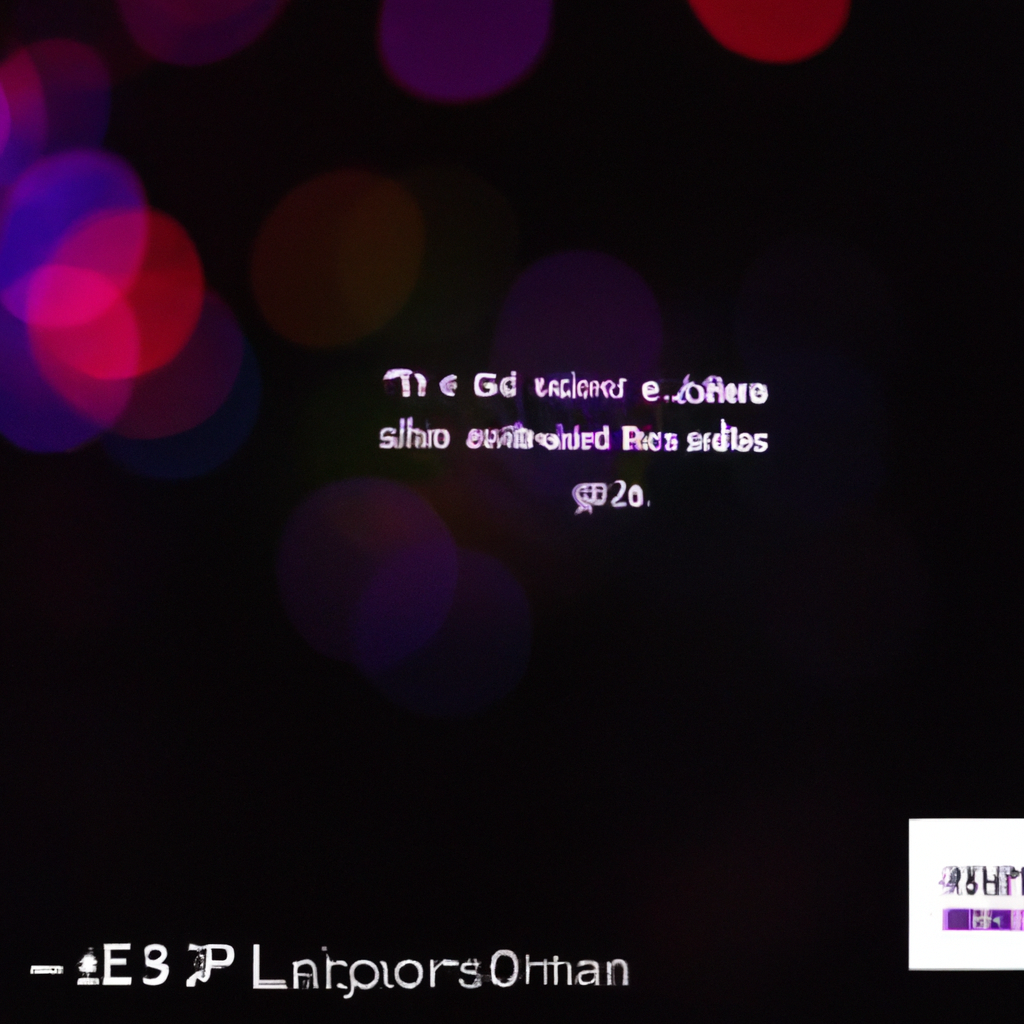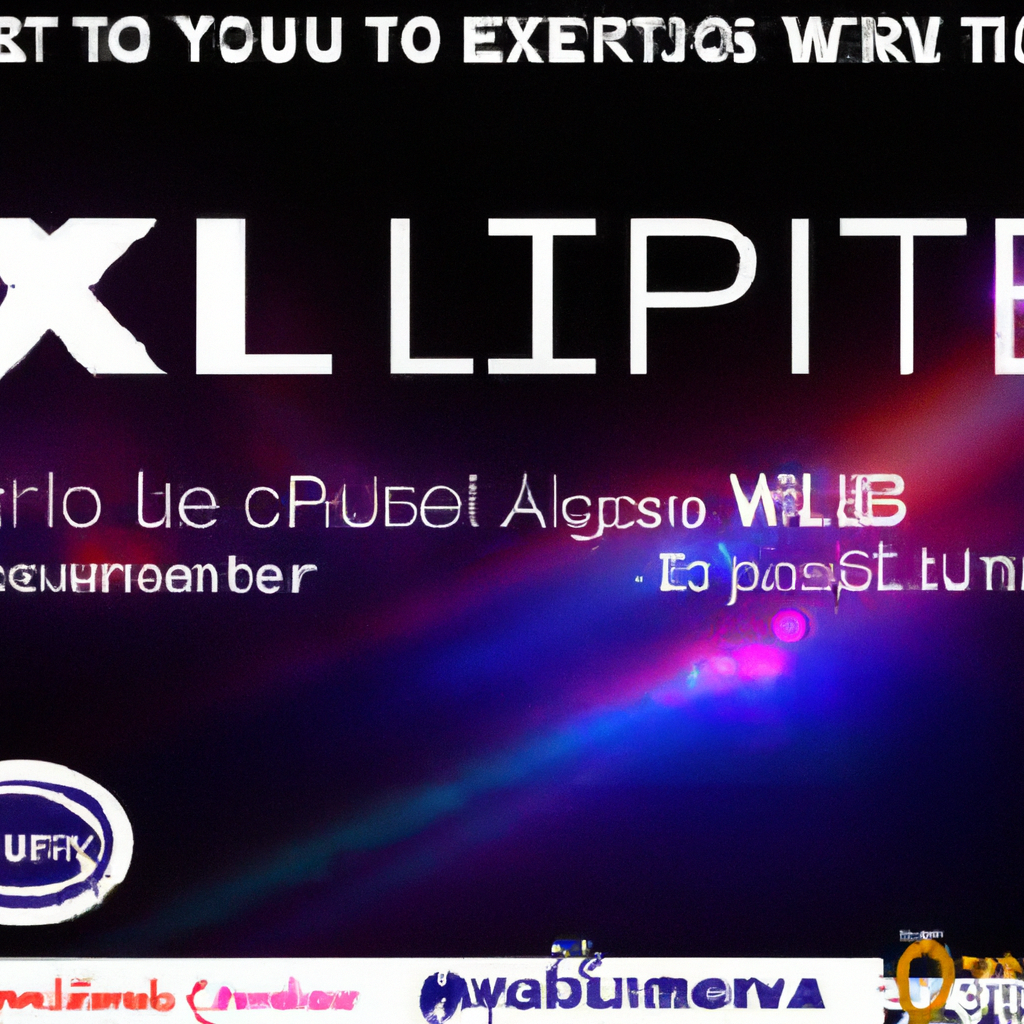Imagine a world where internet connectivity is not limited to Wi-Fi signals, but can be accessed through light. This exciting possibility is made possible by Li-Fi, a groundbreaking technology that uses light to transmit data. With faster speeds, increased security, and the ability to work in environments where radio frequencies are restricted, Li-Fi has the potential to revolutionize how we connect to the internet. In this article, we explore the potential of Li-Fi and its implications for the future of internet connectivity.

Understanding Li-Fi Technology
Definition of Li-Fi
Li-Fi, short for Light Fidelity, is a wireless communication technology that uses visible light to transmit data. This innovative technology allows for high-speed, secure, and energy-efficient data transfer by modulating the intensity of light emitted by LEDs (Light Emitting Diodes).
History and Development of Li-Fi
The concept of using light as a medium for wireless communication was first introduced by Professor Harald Haas in a TED Global talk in 2011. Since then, researchers and engineers have been working diligently to develop this groundbreaking technology further. Over the years, Li-Fi has evolved, and numerous advancements have been made to enhance its performance and reliability.
Fundamental Principles Behind Li-Fi
The fundamental principle behind Li-Fi is Visible Light Communication (VLC), which utilizes the optical spectrum to transmit data. Essentially, Li-Fi allows for the conversion of binary data into light pulses, which can be detected and interpreted by receivers equipped with photodetectors. This process enables the seamless transfer of information through light waves.
How Does Li-Fi Work
Visible Light Communication (VLC)
VLC forms the basis of Li-Fi technology. The concept revolves around using light as the medium for communication instead of traditional radio frequencies. By modulating the intensity of light, Li-Fi can transmit data at an incredibly high speed. The data is carried in the form of binary bits, which are then decoded by the receiving device.
RF Spectrum and Optical Spectrum
Li-Fi technology operates in the optical spectrum, specifically within the visible light range. This differs from Wi-Fi, which operates in the radio frequency (RF) spectrum. The optical spectrum offers several advantages such as higher available bandwidth and lower interference compared to the crowded RF spectrum. By utilizing the vast bandwidth of visible light, Li-Fi has the potential to revolutionize wireless communication.
Data Transmission and Reception
In a Li-Fi system, data transmission occurs through the modulation of light intensity. Light Emitting Diodes (LEDs) serve as the Li-Fi transmitters, where the light signals are encoded with data. On the receiving end, photodetectors capture the modulated light signals and convert them back into data. This seamless transmission and reception process enables high-speed and reliable communication through light waves.
Components of a Li-Fi System
Li-Fi Transmitter (LEDs)
Central to a Li-Fi system are the LEDs, which act as the transmitters. These LEDs emit light signals that carry the encoded data. Li-Fi technology utilizes both conventional white LEDs and specially designed LEDs that can emit light at extremely high speeds. The advancements in LED technology have played a crucial role in the development and implementation of Li-Fi.
Modulation Circuitry
Modulation circuitry is an essential component of a Li-Fi system. It is responsible for encoding the data onto the light signals emitted by the LEDs. Various modulation techniques, such as on-off keying (OOK), are used to facilitate the transmission and reception of data. The modulation circuitry ensures efficient and accurate encoding of data, enabling seamless communication using light waves.
Photodetector (Receiver)
On the receiving end of a Li-Fi system, photodetectors play a vital role. These devices capture the modulated light signals and convert them back into electrical signals, which can then be decoded by the receiving device. Photodetectors are designed to sense and interpret even the slightest variations in light intensity, enabling accurate and reliable data reception.
Comparing Li-Fi and Wi-Fi
Similarities Between Li-Fi and Wi-Fi
Li-Fi and Wi-Fi share some similarities in terms of their purpose, which is to enable wireless communication. Both technologies allow devices to communicate wirelessly, albeit using different mediums (light for Li-Fi, radio waves for Wi-Fi). Moreover, both technologies enable data transmission, albeit at different speeds and with varying levels of efficiency.
Key Differences Between Li-Fi and Wi-Fi
The key difference between Li-Fi and Wi-Fi lies in the medium used for communication. While Wi-Fi uses radio waves in the crowded RF spectrum, Li-Fi utilizes visible light in the optical spectrum. This fundamental difference has several implications, such as higher available bandwidth, lower interference, and increased security for Li-Fi. Additionally, Li-Fi offers the potential for higher data transfer rates compared to Wi-Fi.
Benefits of Li-Fi over Wi-Fi
Li-Fi offers several advantages over Wi-Fi. One significant benefit is its incredible data transfer speed, which can reach gigabit per second (Gbps) rates, surpassing the capabilities of traditional Wi-Fi networks. Additionally, Li-Fi can operate in environments where RF-based wireless technologies, like Wi-Fi, face limitations, such as in areas with high electromagnetic interference. Moreover, Li-Fi’s use of light waves makes it inherently more secure, as light signals do not penetrate physical barriers like walls, offering greater privacy and reducing the risk of eavesdropping.

The Advantages of Li-Fi
High-Speed Data Transmission
One of the most significant advantages of Li-Fi is its exceptional data transfer speed. With theoretical speeds reaching several Gbps, Li-Fi has the potential to revolutionize the way we transfer data wirelessly. This high-speed capability opens up numerous possibilities for applications that require rapid data exchange, such as video streaming, large file transfers, and real-time communication.
Energy Efficiency
Li-Fi technology offers notable energy efficiency advantages. Since light bulbs are already commonly used for illumination, integrating Li-Fi capabilities into lighting infrastructure can result in increased energy savings. By leveraging existing LED lighting infrastructure, Li-Fi can provide wireless communication services without additional power consumption, making it a sustainable and environmentally friendly option.
Security Advantages
Li-Fi’s use of visible light as the medium for communication offers inherent security advantages. Unlike Wi-Fi, which relies on radio waves that can pass through walls and objects, Li-Fi signals are confined to the space illuminated by the light source. This limited coverage area enhances the security of Li-Fi networks as potential eavesdroppers would need physical access to the light source to intercept the data being transmitted.
The Limitations of Li-Fi
Range and Blockage Problems
One limitation of Li-Fi technology is its limited range compared to Wi-Fi. Since visible light cannot propagate through solid obstacles, such as walls or furniture, the coverage area of a Li-Fi network is restricted to the line-of-sight between the transmitter and receiver. This range restriction poses challenges for establishing Li-Fi connectivity in spaces with multiple rooms or complex layouts, where obstacles obstruct the direct path of light.
Lack of Infrastructure
Another current limitation of Li-Fi is the lack of infrastructure to support widespread adoption. While Wi-Fi infrastructure is prevalent worldwide, Li-Fi requires the installation of specialized LED lighting systems with integrated transmitters. The cost and effort associated with retrofitting existing infrastructure or deploying new Li-Fi-enabled lighting infrastructure create barriers to the widespread implementation of Li-Fi technology.
Adaption and Cost Challenges
Li-Fi faces challenges regarding device adoption and cost. For Li-Fi to become a viable alternative to Wi-Fi, devices need to be equipped with both LED transmitters and photodetectors, adding to the complexity and cost of implementation. Additionally, the cost of Li-Fi-enabled LED lighting fixtures may currently be higher compared to traditional lighting options, further impeding the widespread adoption of Li-Fi.

Testing and Implementations of Li-Fi
Current Testing Initiatives
Numerous organizations and companies are actively testing and researching Li-Fi technology to explore its potential applications and address its limitations. These initiatives involve conducting feasibility studies, assessing performance metrics, and developing prototypes to test the practicality and benefits of Li-Fi in real-world scenarios. These ongoing tests and research efforts are critical in driving the advancements and standardization of Li-Fi technology.
Successful Implementations Worldwide
While Li-Fi is still in its early stages of development, several successful implementations have demonstrated the feasibility and benefits of this technology. For example, Li-Fi has been integrated into smart lighting systems in various office and industrial settings, providing both illumination and data communication. Additionally, Li-Fi installations in museums and exhibitions have offered visitors interactive and engaging experiences, enhancing the way information is presented.
Future Testing Plans
In the future, there are plans to conduct more comprehensive testing to refine Li-Fi technology and push its boundaries further. These testing initiatives aim to overcome the current limitations of Li-Fi, such as range constraints and adaptation challenges. Additionally, researchers are exploring the integration of Li-Fi with other wireless technologies to create seamless hybrid networks that maximize the advantages of each technology.
Potential Applications of Li-Fi
Li-Fi in Healthcare
Li-Fi holds significant potential in healthcare settings, where data security and reliability are of utmost importance. In hospitals and clinics, Li-Fi networks can enable secure and high-speed transmission of sensitive medical data, ensuring patient privacy and facilitating real-time communication between healthcare providers. Moreover, Li-Fi can be used to track medical equipment, monitor patient movements, and enhance the overall efficiency and effectiveness of healthcare operations.
Li-Fi in Aerospace
The aerospace industry can greatly benefit from Li-Fi technology. With its high-speed data transfer capabilities and low interference, Li-Fi can revolutionize communications within aircraft and spacecraft. From in-flight entertainment to cockpit communications and data exchange between avionics systems, Li-Fi can enhance the passenger experience, improve flight operations, and even support autonomous aviation systems.
Li-Fi in Education
Education is another domain where Li-Fi can make a significant impact. By integrating Li-Fi with classroom lighting systems, educators can create interactive and immersive learning environments. Students can access educational materials wirelessly, collaborate in real-time, and engage in dynamic multimedia content. Furthermore, Li-Fi enables personalized learning experiences, as it can transmit tailored content directly to individual devices, enhancing student engagement and knowledge retention.
Li-Fi in Automotive Industry
Li-Fi technology holds immense potential for applications within the automotive industry. Through Li-Fi-enabled car lighting systems, vehicles can establish high-speed wireless connectivity, allowing for real-time data transmission between vehicles and surrounding infrastructure. Li-Fi can facilitate vehicle-to-vehicle (V2V) and vehicle-to-infrastructure (V2I) communication, enabling enhanced road safety, optimized traffic flow, and the seamless integration of autonomous vehicles.

The Impact of Li-Fi on Internet Connectivity
Potential to Alleviate Network Congestion
Li-Fi has the potential to alleviate network congestion, which is a pressing issue in today’s world of increasing connectivity demands. By utilizing the vast available bandwidth of visible light, Li-Fi can offload data traffic from congested RF-based wireless networks, such as Wi-Fi and cellular networks. This alleviation of network burden can lead to improved overall network performance, reduced latency, and enhanced user experiences.
Opportunity for Multifunctional Lighting
Li-Fi technology offers an opportunity to revolutionize lighting by enabling multifunctional LED fixtures. Traditional lighting fixtures can be transformed into data communication hubs, providing wireless connectivity while still fulfilling their primary illuminating purpose. This integration of lighting and communication functionalities can lead to substantial cost savings and enhanced user convenience in various settings, such as office buildings, retail spaces, and public venues.
Prospects for IoT devices
With the rapid growth of the Internet of Things (IoT), there is a need for reliable and high-speed wireless connectivity for a massive number of interconnected devices. Li-Fi technology can provide a solution by offering extensive bandwidth and low interference, making it suitable for supporting IoT devices. By leveraging Li-Fi, IoT devices can communicate seamlessly, resulting in enhanced automation, improved efficiency, and the realization of the full potential of IoT applications.
Future of Li-Fi: Conclusions
Expected Growth and Adoption
The future of Li-Fi looks promising, with the potential for significant growth and adoption. As the technology matures and becomes more cost-effective, we can expect to see increased implementation of Li-Fi in various sectors. The demand for high-speed and secure wireless communication continues to rise, and Li-Fi’s unique advantages position it as a strong contender to supplement and improve existing wireless technologies.
Challenges for Future Deployment
Despite its tremendous potential, Li-Fi still faces several challenges that need to be addressed for its widespread deployment. Overcoming range limitations, increasing device compatibility, and reducing implementation costs are some of the key challenges that researchers and engineers are actively working on. Additionally, establishing industry-wide standards and addressing regulatory concerns are crucial steps towards the future deployment of Li-Fi technology.
Long-Term Effects on Internet Connectivity
In the long run, Li-Fi technology has the potential to reshape internet connectivity by augmenting existing wireless networks. Li-Fi can provide high-speed and secure wireless communication in areas where traditional RF-based technologies face limitations. As the demand for faster and more reliable connectivity increases, Li-Fi’s unique advantages make it a promising candidate for fulfilling these requirements and contributing to a more connected world.











